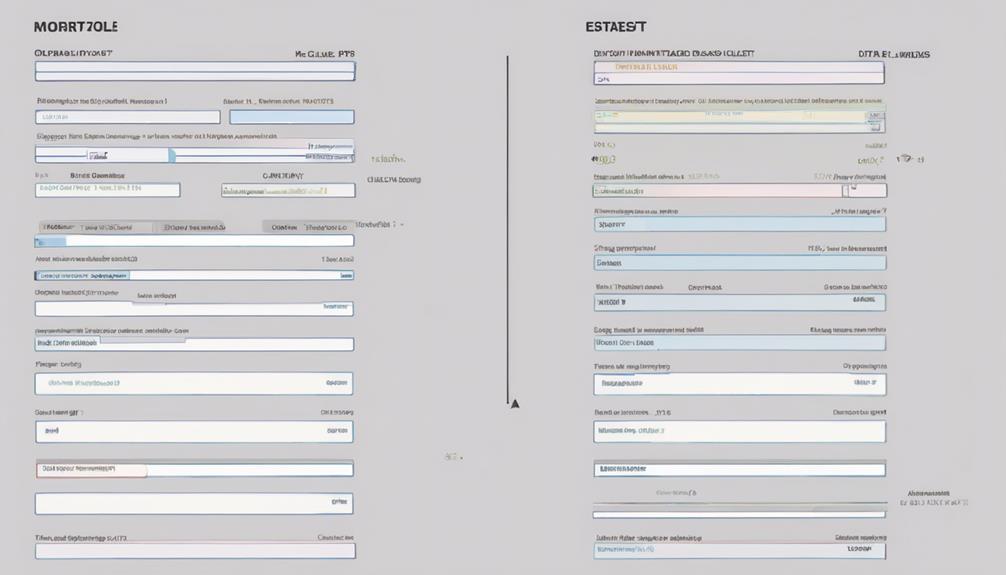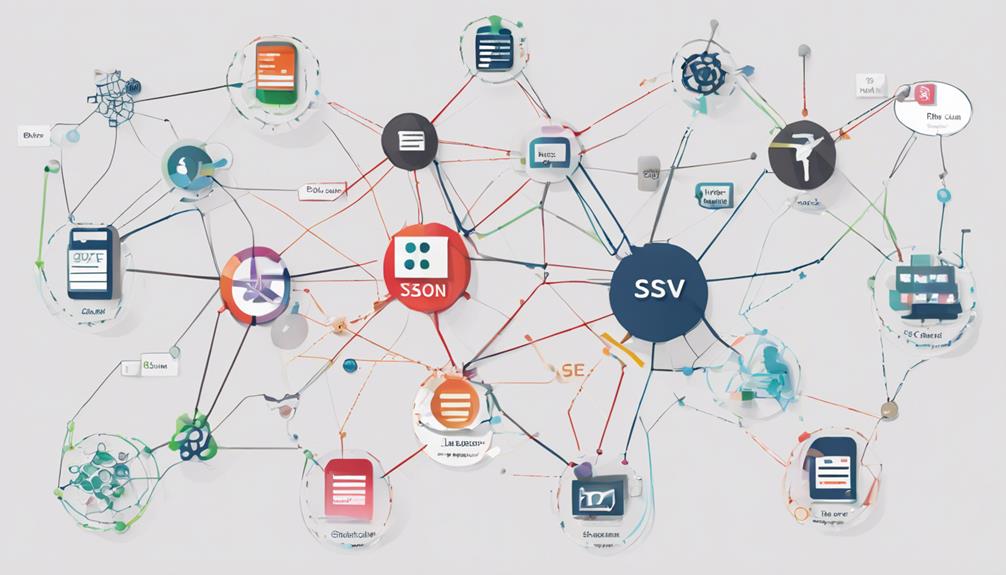When it comes to database data formatting, you might not realize the profound impact it can have on your data analysis outcomes. From uncovering hidden patterns to making informed decisions, the way your data is formatted can either make or break the effectiveness of your analysis. Stay tuned to discover how database data formatting affect data analysis and can be the key to unlocking valuable insights and driving impactful decision-making processes.
Improves Data Quality
Database data formatting plays a crucial role in improving data quality. By implementing processes such as data cleansing and data standardization, you can significantly enhance the overall quality of your database. Data cleansing involves detecting and correcting errors or inconsistencies in the data, ensuring that the information is accurate and reliable. This step helps to eliminate duplicate entries, correct misspellings, and identify missing or incomplete data.
Similarly, data standardization involves structuring the data in a consistent format, making it easier to analyze and interpret. This process establishes uniform naming conventions, units of measurement, and data formats across the database. By standardizing the data, you can avoid confusion and ensure that all information is organized in a logical and coherent manner.
Enhances Accuracy
Improving data formatting not only enhances accuracy but also boosts the overall quality of your database information. By ensuring consistent and standardized formats, you streamline the analysis process and make it easier to derive precise insights from the data. This enhanced accuracy leads to more reliable decision-making and a deeper understanding of your business operations.
Improved Data Quality
Enhanced data quality is pivotal in ensuring the accuracy of your data analysis processes. By focusing on data consistency and integrity through practices like data standardization and cleaning, you can significantly improve the quality of your database information. Data consistency ensures that information is uniform and accurate across all records, reducing errors and discrepancies that could affect your analysis. Maintaining data integrity guarantees that the data is accurate, reliable, and secure, preventing issues such as duplication or corruption.
Through data standardization, you can transform data into a common format, making it easier to compare and analyze information from different sources. Data cleaning involves identifying and rectifying errors, inconsistencies, and incomplete entries in the database, ensuring that your data is accurate and reliable for analysis. By enhancing data quality through these measures, you can increase the precision and trustworthiness of your data analysis results, leading to more informed decision-making processes.
Streamlined Analysis Process
When streamlining your data analysis process, you aim to optimize efficiency without compromising accuracy. By implementing streamlined processes, you can achieve faster processing and simplified interpretation of data. This approach allows you to work through datasets more efficiently while maintaining the integrity and accuracy of your analysis.
Streamlining your analysis process involves organizing data in a coherent and accessible manner. This ensures that information is readily available for interpretation and decision-making. By structuring your data in a clear and logical way, you can expedite the analysis process and extract insights more effectively.
Additionally, streamlining your analysis process can help in identifying key patterns and trends within the data promptly. This enables you to make informed decisions based on accurate and timely information. By optimizing the efficiency of your data analysis process, you can enhance the accuracy of your findings and derive more meaningful insights from your datasets.
Enables Precise Insights
To enable precise insights and enhance accuracy in your data analysis, structuring your data in a clear and accessible manner is essential. Proper data formatting allows for effective data visualization, enabling you to present information in a meaningful way. When data is well-organized, it becomes easier to identify trends, patterns, and outliers, leading to more accurate data interpretation.
By formatting your data correctly, you can streamline the process of data visualization, making it simpler to create graphs, charts, and other visual aids that highlight key findings. This not only enhances the overall presentation of your analysis but also facilitates a deeper understanding of the data for yourself and others involved in the analysis process.
Moreover, accurate data interpretation is heavily reliant on the quality of the data formatting. When data is structured logically and consistently, it becomes easier to draw reliable conclusions and make informed decisions based on the insights gained. Therefore, by ensuring that your database data is well-formatted, you are paving the way for more precise insights and improved accuracy in your data analysis.
Facilitates Integration
A well-organized database data formatting can significantly streamline the process of integrating data from various sources. Efficient data integration relies on having consistent formatting across datasets. When data is formatted consistently, it becomes easier to correlate information from different sources accurately. This correlation is essential for identifying relationships and patterns that can lead to valuable insights.
Makes Data Actionable
To make data truly actionable, you need to focus on enhancing its usability, which can greatly impact how effectively decisions are made. Properly formatted data not only influences the decision-making process but also improves the interpretation of the data. By ensuring data is actionable, you empower yourself to make informed choices that can drive impactful outcomes.
Enhances Data Usability
Enhancing data usability is crucial for making informed decisions and taking effective actions based on analysis. By formatting data in a user-friendly manner, you can significantly increase efficiency and enhance readability. When data is well-organized and easy to access, it becomes more usable for individuals across different levels of expertise.
Clear data formatting allows you to quickly identify trends, anomalies, and insights, enabling you to act promptly and decisively. Properly formatted data also reduces the time spent on deciphering complex structures or searching for specific information, ultimately streamlining the decision-making process.
Moreover, enhanced data usability empowers you to extract valuable information efficiently, leading to more accurate analyses and informed conclusions. This, in turn, boosts the effectiveness of your actions and strategies. Therefore, investing time and effort in optimizing data usability through formatting can significantly improve your ability to leverage data for actionable insights and impactful decision-making.
Influences Decision-Making Process
Optimizing data formatting not only enhances usability but also plays a pivotal role in influencing the decision-making process. When data is presented in a visually appealing and easy-to-understand format through data visualization techniques, it becomes more digestible for decision-makers. Visual representations such as charts, graphs, and dashboards can convey complex information in a simplified manner, enabling quicker comprehension and analysis of the data at hand.
Moreover, well-formatted data provides decision support by offering insights that aid in making informed choices. By structuring data in a clear and organized way, decision-makers can extract valuable conclusions and patterns that guide their strategic direction. This streamlined data processing helps in identifying trends, correlations, and outliers promptly, facilitating swift and accurate decision-making processes.
In essence, data formatting not only refines the usability of data but also transforms it into actionable insights that drive effective decision-making. By optimizing the presentation of data through visualization and providing decision support, formatted data becomes a powerful tool in the hands of decision-makers.
Improves Data Interpretation
Improving data interpretation is crucial for transforming raw information into actionable insights that drive informed decision-making. Proper formatting of database data plays a vital role in enhancing your ability to extract meaningful conclusions from the information at hand. Here’s how it can benefit you:
- Simplifies interpretation: Well-organized data makes it easier to grasp the key points without getting lost in unnecessary details.
- Enhances understanding: Clear formatting helps in presenting information in a coherent manner, aiding in better comprehension.
- Facilitates analysis: Structured data allows for efficient processing and analysis, saving time and effort in deriving valuable insights.
- Improves insight: By presenting data in a user-friendly format, you can gain deeper insights and make more informed decisions based on the information available.
Supports Decision Making
When analyzing data for decision-making purposes, it is crucial to ensure that the database data formatting is accurate and consistent. Proper data formatting supports decision-making by enabling clear data visualization and aiding in accurate data interpretation. Consistent formatting ensures that data is presented uniformly, making it easier to identify trends, patterns, and outliers that are crucial for making informed decisions.
Effective data formatting contributes to decision-making by providing a structured framework for data analysis. When data is formatted correctly, it can be visualized through graphs, charts, and dashboards, allowing decision-makers to quickly grasp insights and trends. Additionally, well-formatted data allows for easier interpretation, helping decision-makers draw accurate conclusions and make informed choices based on reliable information.
Enables Data Visualization
To enable effective data visualization, ensuring that the database data formatting is consistent and accurate is paramount. Proper formatting plays a crucial role in presenting data in a visually appealing and understandable manner. Here’s why data formatting enables data visualization:
- Enhances Data Presentation: Well-formatted data allows for clear and concise presentation, making it easier to interpret and analyze.
- Facilitates Integration with Visualization Tools: Properly formatted data seamlessly integrates with various visualization tools, enabling the creation of insightful charts, graphs, and dashboards.
- Improves Data Accuracy: Consistent formatting reduces errors in data visualization, ensuring accurate representation of information.
- Promotes Insights Discovery: When data is formatted correctly, it enhances the ability to discover meaningful insights through visual representations.
Enhances Data Accessibility
Enhancing data accessibility is a fundamental aspect of optimizing data utilization within a database. By organizing and formatting data in a clear and structured manner, you can significantly increase efficiency in retrieving and interpreting information. When data is easily accessible, it promotes understanding among users, allowing for quicker decision-making processes and more informed analysis.
Proper formatting ensures that data is presented in a user-friendly way, making it simpler to navigate and locate specific information within the database. This accessibility not only saves time but also reduces the likelihood of errors that may arise from misinterpretation or confusion due to poorly formatted data.
Moreover, enhancing data accessibility facilitates collaboration among team members by providing a common platform where everyone can easily access and comprehend the information. This accessibility promotes a more cohesive approach to data analysis and fosters a shared understanding of the insights derived from the database. By prioritizing data accessibility, you can streamline workflows, enhance communication, and ultimately drive more effective decision-making processes.
Frequently Asked Questions
How Does Database Data Formatting Impact Data Security Measures?
You need to understand how database data formatting influences both data security and accuracy. Proper formatting ensures secure data handling and accurate analysis. Inadequate formatting can lead to vulnerabilities and compromised data integrity. Be vigilant.
Can Data Formatting Affect the Speed of Data Processing?
Data formatting directly impacts the speed of data processing. By optimizing performance through efficient formatting, you enhance data analysis. Consistent formatting ensures quicker retrieval and analysis of information, contributing to streamlined processes and improved decision-making capabilities.
What Role Does Data Formatting Play in Data Governance?
In data governance, data formatting acts as the gatekeeper ensuring data quality and integrity, akin to a vigilant sentinel guarding the fortress. Proper formatting maintains order, enhances clarity, and fortifies the foundation of reliable data governance.
Does Data Formatting Influence Data Storage Requirements?
When you format data properly, it impacts data storage requirements by influencing data normalization. Effective formatting ensures storage optimization, reducing redundancy and improving efficiency. Consistent formatting practices lead to better storage management and streamlined database operations.
How Does Data Formatting Impact Data Migration Processes?
When you migrate data, formatting affects accuracy. For instance, improper date formatting can lead to errors. Ensure consistent formats to avoid issues. Validating data during migration is crucial for maintaining accuracy in the process.



